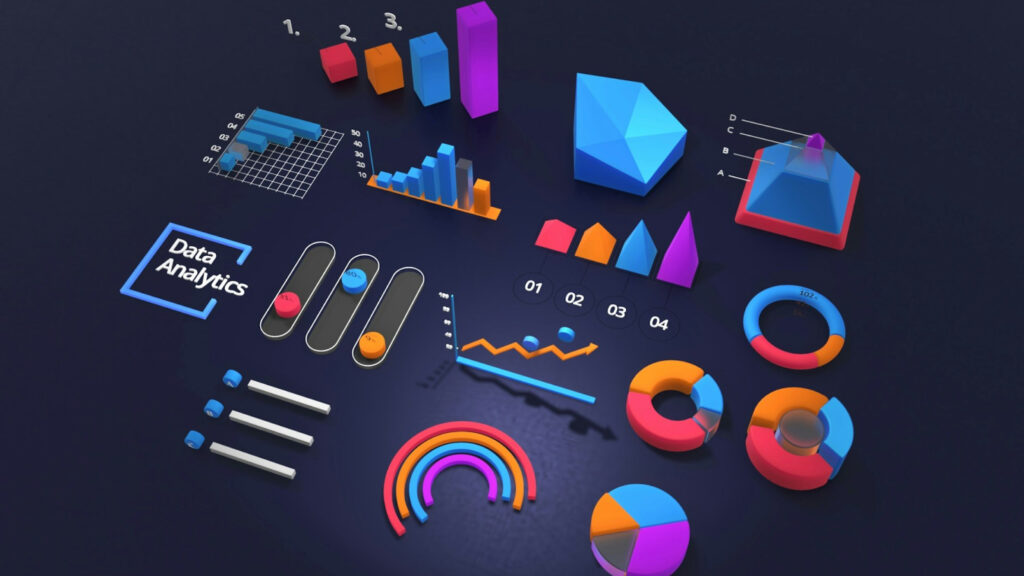
HOME / BLOG / STATISTICS
70+ Powerful UGC Statistics (2025) + Actionable Insights to Leverage Them
- October 11, 2025
- Bill Nash
- 4:18 pm
“User-Generated Content (UGC) is no longer optional — brands that don’t lean into it will get left behind.”
Table of Contents
Trust, Authenticity & Influence
60% of consumers regard UGC as the most authentic form of marketing content.
84% of people are more likely to trust a brand if it uses UGC in its marketing campaigns.
92% of consumers trust recommendations from other people more than any other source.
93% of consumers find UGC very helpful when making a purchase decision.
55% of shoppers hesitate to buy a product without UGC (reviews/photos) present.
53% of shoppers say UGC gives them more confidence in purchase decisions than professional photography.
40% of shoppers will not purchase if there is no UGC on the product page.
25% of search results for the world’s biggest brands are links to UGC.
77% of shoppers are more likely to buy a product they discovered through UGC.
85% of consumers say they turn to visual UGC (photos, videos) over branded content when making purchase decisions.
Adoption & Strategy by Brands / Marketers
87% of brands use UGC in their marketing strategies.
81% of eCommerce marketers believe visual UGC is more impactful than professional photography or influencer content.
75% of professional marketers find UGC to be a more authentic content type.
Only 16% of brands have a dedicated UGC strategy.
48% of experienced marketers believe UGC humanizes their marketing.
42% of marketing professionals view UGC as essential to their content strategy.
50% of marketers make use of UGC in email campaigns.
41% of marketers say content engagement is the leading KPI for UGC.
67% of retailers plan to increase investment in UGC.
82% of brands / retailers are moving or considering moving paid media budgets to owned/earned content leveraging UGC.
42% of B2B buyers agree that peer reviews / UGC play a greater role in their purchase decisions.
86% of brands believe more authentic UGC in paid & owned media would improve ad performance.
6 in 10 consumers say UGC is the most authentic marketing form.
50% of people want guidelines from brands about what content to create / share.
75% of marketers consider UGC more cost-effective than influencer / pro content.
31% of consumers find UGC ads more memorable than branded ones.
Engagement & Consumption
UGC content earns ~28% higher engagement than traditional brand content on social networks.
41% of consumers read 4–7 UGC reviews before making a purchase decision.
70% of consumers consider UGC before making purchases.
89% of people would post about a great traveling experience (i.e. UGC).
85% of people would post about a great restaurant / dining experience.
65% of people would post about positive experiences in health, spa, beauty contexts.
45% of people will unfollow a brand on social media if it’s “too self-promoted.”
UGC posts on social media have a 28% higher engagement rate than brand content.
Visitors to websites that display UGC spend up to 90% more time on site.
Engagement increases by 28% when consumers see a mix of user videos + official brand content.
Brand messages are re-shared up to 24× more when distributed by employees vs. by the brand itself (employee advocacy / UGC).
93% of customers believe user-generated content is very helpful when making a purchasing decision.
87% of brands use UGC as “authentic (and free)” content.
Conversion, ROI & Impact
Brands using UGC see ~29% more web conversions than those without.
UGC in email marketing increases click-through rates by 78%.
Ads with UGC get 4× higher click-through rates and 50% lower cost per click (vs non-UGC ads).
Campaigns that include UGC in the purchase path see ~10% more conversions on average.
UGC increases conversions by 10% in the buying process.
On-site reviews (UGC) increase conversions by 74%.
Featuring UGC can increase revenue per visitor by 154%.
Shoppers rank UGC types: reviews (78%), Q&A (77%), photos by real users (69%) as most impactful.
62% of shoppers are more likely to purchase if they can view customer photos/videos.
Ads featuring UGC have a 50% reduction in cost-per-click, compared to ads without.
UGC contributes many multiples via ROBO (Research Online, Buy Offline): e.g. in the Bazaarvoice network, UGC influences $3.91 in-store for every $1 online revenue.
Some brands using UGC saw their conversion lift by 126%. (As per case studies)
A 308% increase in time on site when users interact with gallery UGC content on product pages.
140% higher conversion rates when users interact with UGC galley content on product pages.
15% higher average order value when users interact with gallery content on product pages.
For every $1 spent on the Bazaarvoice platform, brands got back $4 (400% ROI).
GANT reduced its return rate by 5% by leveraging UGC.
Iconic London gained a 126% lift in conversion rates through UGC.
Bazaarvoice adds ~2.71% contribution to total revenue (for clients).
More than half of Gen Zers (55%) want to be featured on a brand’s social media pages (i.e. create UGC).
80% of Gen Z consumers have either shared or are willing to share their purchases on social media.
13% of Gen Z shoppers who made a social purchase say UGC was the biggest influence (vs influencer, discounts, etc.).
Market Size, Growth, Trends & Forecasts
The global UGC content market is valued at ~US$5.36 billion (202x) and projected to reach US$32.6 billion by 2030.
As of 2025, the UGC market is estimated at over US$7.6 billion — up ~69% from US$4.5 billion in 2024.
UGC software / platform market is expected to grow at ~CAGR 32%, reaching US$71.3 billion by 2032.
78% of all online content is predicted to be user-generated by 2033.
Since 2021, spending on UGC has grown by 100%.
In the U.S., spending on UGC content is projected to exceed US$10 billion in 2025.
The creator economy (which includes UGC) is forecasted to be worth ~$480 billion by 2027.
In 2025, creator / user-generated platforms are expected to generate more ad revenue than traditional media like TV, print, etc.
From WPP forecasts: creator-driven content will surpass ad revenue of professional media in 2025.
UGC is forecasted to capture a greater share of ad revenue than professionally produced content in 2025.
44% of brands and retailers use social media to drive traffic to their online stores (leveraging UGC).
47 out of 100 (i.e. many) content marketing stats lists include UGC trends and metrics (i.e., UGC is central in content marketing).
Platform & Format Insights
Nearly 28% of eCommerce marketers believe Instagram generates the most engaging UGC.
Other platforms: Facebook (23%), TikTok (19%), YouTube (17%), X/Twitter (10%) as top for UGC engagement.
Instagram posts with UGC are projected to garner ~70% more engagement than traditional brand posts in 2025.
TikTok’s UGC is expected to be ~22% more effective than brand content (in 2025).
YouTube UGC videos receive almost 10× more views than branded content (on some reports).
Short-form video (Reels, TikTok, Shorts) is a dominant format for UGC in 2025.
Vertical-form videos (Reels, Shorts, Stories) have higher watch-completion rates vs horizontal ones (90% higher, in some data).
AI-generated metadata (titles, descriptions) for UGC content can boost valid watches by 1.6% and watch duration by 0.9%.
If the creator revises AI-generated titles (co-creation), boosts rise to ~7.1% more views and 4.1% more watch duration.
Algorithm, AI & Technical Effects
The provision of AI-generated titles increases the likelihood videos have titles by 41.4%, which helps recommendation matching.
Pure relevance-based recommendation systems may favor short-term satisfaction but reduce content diversity over time (trade-off).
More exploratory (less aggressive) recommendation policies may slightly reduce satisfaction but support more content creation.
AI-generated metadata (titles) are more beneficial when creators revisit / revise them vs leaving them as-is.
Misc / Behavior & Attitudes
14 in 10? (i.e. many) consumers post about positive experiences, travel, restaurant visits, etc. (as UGC) — e.g. 89%, 85%, 65% rates above.
35% of Gen Z believe in next few years UGC will be more credible than brand/institutional content.
70% of consumers read or watch reviews before making a purchase.
82% of people think about buying something after seeing a friend / connection post about it.
~92% of people trust reviews and user posts more than advertisements when shopping.
Only 16% of companies have plans to use user-made content (i.e. formal strategy).
UGC content gets ~28% more responses from audiences than professional ads.
70% of people read or watch reviews before buying something. (duplicate but often cited)
78% of people say UGC influences their purchasing decisions.
74% of buyers use social media to assist in making shopping decisions.
Word-of-mouth (UGC-like) marketing is said to double sales compared to paid ads (in some case references).
UGC is ~8.7× more impactful than influencer content and 6.6× more powerful than branded content in some comparisons.
42% of shoppers say they would buy a product even with no professional photos, using only user-generated photos.
80% of consumers prefer seeing real customer photos rather than stock photography.
31% of brands feature UGC in email marketing.
One in five consumers say they shop directly via social media (Facebook shops, via influencer stories, ads).
44% of B2B buyers see UGC / peer reviews as having greater influence. (repeat of #21)
35% of UGC is generated in response to positive experiences (restaurants, travel, etc.). (As per behavior metrics above)
How to Use These Statistics Strategically
It’s not enough to collect stats — you need to use them to inform action.
A. Audit your UGC baseline
How much UGC do you currently have? (reviews, photos, testimonials)
Which formats (video, image, text) dominate?
What’s your UGC-to-brand-content ratio?
Where is UGC underutilized (product pages, social, ads)?
B. Design high-impact UGC campaigns
Hashtag campaigns / challenges — encourage users to post with specific tags
Contests / incentives — gamify content creation
Feature & reward contributors — spotlight top UGC creators
Hybrid UGC + pro content — e.g. use UGC as base and layer light edits
Repost permission flows — ask users to opt in
C. Amplification & repurposing
Use UGC in paid ads (as “social proof creatives”)
Embed in email campaigns
Showcase in product pages, landing pages, hero banners
Use UGC in retargeting ads (remind prospects of real users)
Syndicate to PR / content pieces
D. Metrics & optimization
Engagement rate (likes, comments, shares)
Conversion lift vs. control ads
Click-through rate (CTR) of UGC creatives
Share of sales influenced by UGC
UGC volume growth month-over-month
Cost per UGC creative (if incentivized)
Ready to Grow Your Business?
At Marketing LTB, we specialize in helping businesses like yours thrive online. From strategic digital marketing and branding to web development and social media management, we offer the tools and expertise to elevate your brand and drive real results.
Let’s build something amazing together, get in touch with us today!

About Marketing LTB
Marketing LTB is a full-service marketing agency offering over 50 specialized services across 100+ industries. Our seasoned team leverages data-driven strategies and a full-funnel approach to maximize your ROI and fuel business growth. Discover how our expertise can drive revenue for your business>

About the author, Bill Nash
Bill Nash is the CMO of Marketing LTB with over a decade of experience, he has driven growth for Fortune 500 companies and startups through data-driven campaigns and advanced marketing technologies. He has written over 400 pieces of content about marketing, covering topics like marketing tips, guides, AI in advertising, advanced PPC strategies, conversion optimization, and others.
